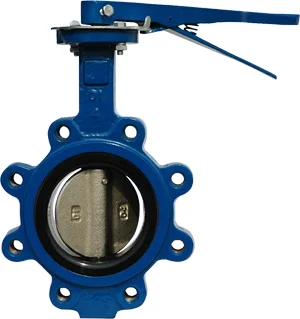Construction - Advantages and disadvantages of Globe valves
Construction - Advantages and disadvantages of Gate valves
Avoiding problems with Butterfly valves
The majority of all problems with Butterfly valves in the field are directly related to poor installation procedures. For this reason, it is wise to consider best-practice when laying out pipe-work and installing the valve itself.
The seat in a resilient-seated Butterfly valve usually extends around to both faces of the valve. As a result, no gaskets are required as these seats serve the function of a gasket. The seat material which extends past the face is compressed during installation and flows toward the center of the valve seat. Any change in this configuration due to improper installation directly affects the pressure rating and seating/unseating torques.
Unlike most valve types, the Butterfly valve's disc actually extends beyond the face of the valve body at given angles of opening (say, 30° or more) when installed between flanges. Therefore, it is very important before installation to ensure that the disc is able to freely turn and enter the flanges and pipe-work.
Shipment & Storage
- Position discs at 10% open so that they are unseated.
- The faces of each valve should be covered to prevent damage to the seat face, disc edge, or valve interior.
- Store indoors, preferably with ambient temperatures between 5°C and 30°C.
- Open and close the valves every 3 months.
- Ship and store valves so that no heavy loads are applied to the bodies.
Valve Location
- Butterfly valves should be installed if possible a minimum of 6 pipe diameters from other line elements, i.e. elbows, pumps, valves, etc. Sometimes this is not feasible, but it is important to achieve as much distance as possible.
- Where the Butterfly valve is connected to a check valve or pump, keep enough space between them to ensure the disc does not interfere with the adjacent equipment.
Valve Orientation
As a rule of thumb, Butterfly valves be installed with the stem in the vertical position with the actuator mounted vertically directly above it, however, there are some applications where the stem should be horizontal.
 RSS Feed
RSS Feed Twitter
Twitter 1:19 AM
1:19 AM
 Around the world
Around the world

 Posted in
Posted in 









1 comments:
When installing butterfly valves, ensure proper alignment to avoid disc interference. Use suitable gaskets and avoid overtightening flange bolts. Always verify flow direction and valve orientation. During operation, avoid throttling near fully closed positions to prevent seat damage. Regular inspection and cleaning help maintain sealing integrity and performance over time.
Butterfly Valve Manufacturer
Post a Comment